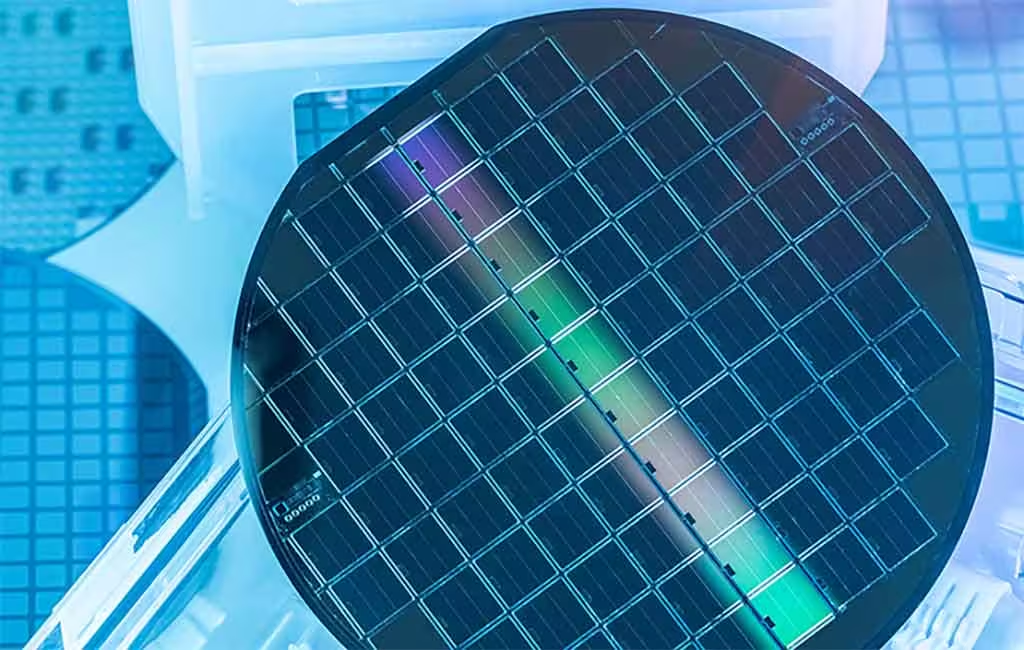5 Minutes
A new materials paradigm
Scientists at Rutgers University–New Brunswick have reported the creation of a previously unknown class of materials, which they call 'intercrystals'. These layered structures show electronic behaviors unlike those of conventional crystals and quasicrystals, and could reshape approaches to electronics, quantum devices, and sustainable material design. Published in Nature Materials, the study demonstrates how small geometric changes at the atomic scale can dramatically alter electron motion and unlock emergent phenomena such as superconductivity and magnetism.
How intercrystals are made: moiré engineering and twistronics
The Rutgers team fabricated intercrystals by stacking two sheets of graphene—each a single atom thick and arranged in a hexagonal, honeycomb lattice—on top of a crystal of hexagonal boron nitride (hBN). By rotating the graphene layers by a slight angle relative to each other and to the hBN substrate, the researchers generated moiré patterns: large-scale interference patterns that arise when two periodic lattices are misaligned. These moiré superlattices, central to the field of twistronics, act as a new periodic potential that reshapes how electrons propagate through the material.
What is twistronics?
Twistronics is a materials-design strategy in which electronic properties are tuned by twisting atomically thin layers with respect to one another. The relative angle changes the moiré pattern and therefore the effective electronic landscape. First explored by the Rutgers group more than a decade ago, twistronics has since become a powerful route to engineer correlated electron phases, including unconventional superconductivity and insulating states, without altering chemical composition.
Key discoveries: electrons controlled by geometry
The study shows that intercrystals occupy an intermediate space between ordinary crystals and quasicrystals. While crystals have repeating translational symmetry and quasicrystals display ordered yet non-repeating patterns, intercrystals combine elements of both: they can exhibit non-repeating moiré arrangements but retain symmetry relationships that significantly affect electron behavior.
Because the electronic bands in intercrystals are set by geometry rather than chemistry, tiny adjustments in twist angle or alignment lead to large shifts in conduction, magnetism, and superconducting tendencies. As lead author Eva Andrei explains, this gives researchers 'a new lever' to control electronic phases by geometric design alone. Co-author Jedediah Pixley adds that it is feasible to imagine entire device architectures where switching, sensing, and signal routing are governed by atomic-scale geometry instead of complex material heterostructures.

Scientific background and experimental details
The experiment combined high-precision layer transfer with atomic alignment techniques to ensure controlled twist angles between the graphene sheets and the hBN substrate. Electronic transport and spectroscopic measurements were then used to map how electrons respond across different geometric configurations. The resulting data revealed emergent band structures and correlated states that change rapidly with small structural adjustments — a hallmark of intercrystalline behavior.
Why geometry matters
Electrons in solids occupy energy bands determined by the arrangement of atoms. In a regular crystal, symmetry constraints make those bands predictable. Introducing a moiré pattern effectively creates a new periodic potential with a much larger length scale, altering band widths and interaction strengths. In intercrystals, the combined influence of the underlying lattices and the moiré superlattice leads to geometric frustration and new electronic phases.
Implications: applications, sustainability, and future technologies
Intercrystals could enable low-loss electronics and compact atomic-scale sensors, both important for quantum computing and advanced consumer technologies. The ability to tune superconductivity and magnetic order through geometry opens pathways for energy-efficient transistors, neuromorphic components, and on-chip quantum elements that require fewer chemical dopants or complex fabrication steps.
Sustainability is another potential advantage: intercrystals can be assembled from abundant, non-toxic elements such as carbon, boron, and nitrogen, offering a more scalable alternative to devices that rely on scarce or environmentally problematic rare-earth materials.
Expert Insight
Dr. Miriam Ortega, a materials physicist not involved in the study, comments: 'This work is an important demonstration of how moiré engineering can produce genuinely new phases of matter. Controlling electronic interactions by geometry reduces reliance on chemistry-driven approaches and could simplify device architectures. The challenge now is reproducibility and integrating these structures into scalable manufacturing processes.'
Related technologies and research directions
The discovery connects directly to ongoing research in twistronics, van der Waals heterostructures, and quantum materials. Next steps will include exploring a broader range of twist angles and substrate choices, improving fabrication yield, and probing dynamical and thermal stability. Integration with existing semiconductor platforms and the development of room-temperature robust effects remain major engineering goals.
Conclusion
Intercrystals introduce a new lever in materials design: atomic-scale geometry. By stacking and twisting atomically thin layers like graphene on boron nitride, researchers can induce moiré superlattices that reshape electron behavior and produce emergent superconducting and magnetic phases. This geometric control promises routes to energy-efficient electronics, novel quantum devices, and more sustainable material systems. As experimental techniques improve and theory matures, intercrystals may become foundational building blocks for next-generation technologies.
Source: scitechdaily


Leave a Comment